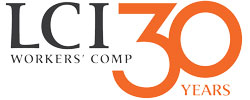Guest Contributor: Stasia Cymes of Clear the Clutter
Getting organized may sound like a great idea in theory, but how does one actually go about making it happen? You may be surprised by the simplicity of the process, but the real trick is to make the commitment to yourself and make it happen. Consider the state of your surroundings as a personal advertisement. For example, a messy office says “I am in a state of chaos” whereas a well-organized space says “I am in a state of control.” By having these visual cues, good or bad, we send a message to ourselves and to the world around us.
Get Down to Business
- Make an appointment with yourself to get organized. Schedule 1-3 hours in your calendar depending on your needs, and get started.
- By eliminating distractions, you increase focus and productivity, so turn off your cell phone, computer and television while you work.
- Remove all non-paper items from your desk. Organize items such as pens, markers, paperclips, etc., and set them aside for now. Allow your desk to become a blank canvas. Throw away any trash, and start a pile for things that don’t belong in your office. Remove them today.
- If your desk is piled high with papers because you lack a functional filing system, color coding folders is a great visual guide as to the status of your files. Cool blue/green represents accomplished, warmer yellow/orange means active and fiery red is action. Note: If you already have a system that works, use this time to review your folders, and simply catch up on your filing.
- Sort papers into three categories: Action (“to-do”), Active (“in-progress”) or Accomplished (“completed”). Have a recycling bin within arm’s reach, and be sure to recycle or shred any unneeded papers as you go.
- Once sorted, file away “Accomplished” and “Active” files according to their category, making sure you have easy access to your Active folders at all times.
- “Action” Items are time-sensitive tasks and require your immediate attention. Since you should be checking this folder daily, it’s also a great place to have your to-do list. Keep this folder current by removing items once completed.
- Return functional items to your desk. Each item should serve a daily purpose, be within reach and have a permanent home. Do you need an office caddy for miscellaneous supplies, or do you have enough drawer space? The surface of your desk should be spacious and usable. If it’s still not enough space, go vertical and keep personal artifacts to a minimum. TIP: If you meet with clients in your office, let your customer service be the focus and not your religious or political beliefs. When it comes to personal artifacts, keep it neutral.
- Once organized, determine how you will maintain your order. Do you have a system for incoming and outgoing papers? Add 5 minutes of office clean-up to your daily to-do list.
- Notice if you have too much of something, such as pens or notepads. How many do you really need to function? It’s okay to keep a few extras on hand, but remember that less stuff requires less effort to maintain.
